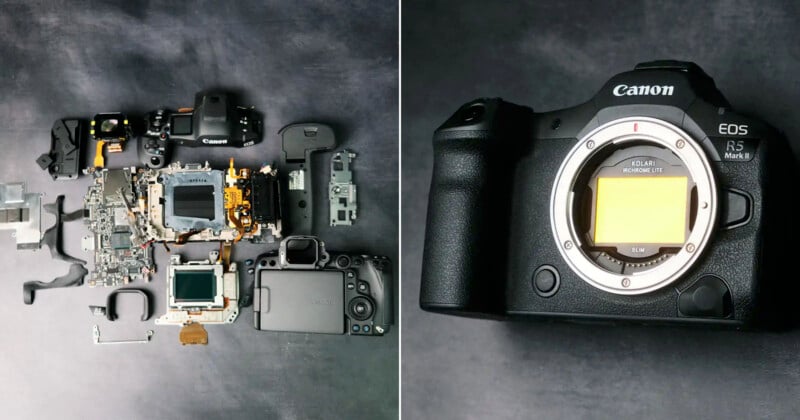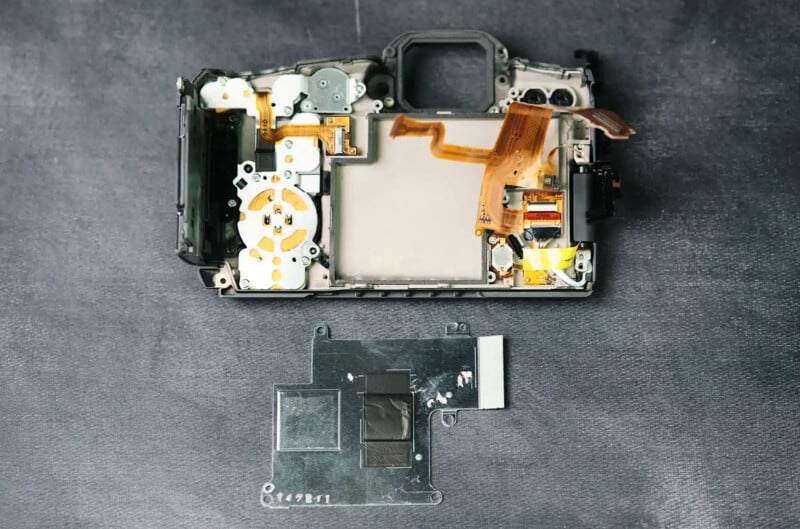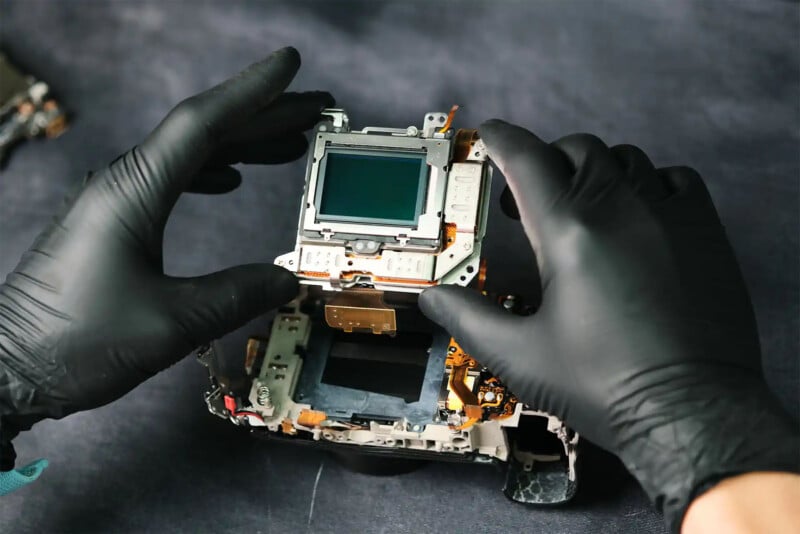
Kolari, known for its camera conversion services and specialized photography filters, routinely shares teardowns of new and exciting cameras. The latest camera to hit the operating table is Canon’s brand-new EOS R5 Mark II full-frame mirrorless camera.
Kolari’s talented technicians are very familiar with the original Canon R5, so it’s especially interesting to see how Canon changed internal design elements in the new model, especially concerning thermal engineering since the original R5 is notoriously prone to overheating.
While the R5’s video features pushed the camera to its thermal limits, the R5 II doubles down on video. The camera features a new 45-megapixel stacked image sensor that can capture 8K RAW video at up to 60p frame rates, which is exceptionally demanding and generates a lot of heat, so how did Canon deal with it?
After removing many screws, Kolari began pulling the R5 II apart and looking under the hood. Kolari found a large hollow space inside the camera for passive cooling, as the R5 II doesn’t have active cooling unless the user buys Canon’s new optional fan grip. The camera includes quite a bit of thermal tape, a heatsink, and thermal pads.

“To better understand Canon’s solution to the overheating problem we disassembled the rear panel. To our surprise, we discovered that there was no fan or active cooling system, meaning the R5 Mk II, in its stock camera body without any attachments, only has passive cooling via vents, thermal pad, and heatsink,” Kolari writes.
In PetaPixel‘s Canon EOS R5 II review, Chris Niccolls and Jordan Drake found that the R5 II handles heat much better than its predecessor, although still lags behind some of the competition, including the Nikon Z8 which can record 8K video for nearly twice as long as the stock R5 II. That said, the overall results are “excellent” and “worlds better than before.”

Beyond a better passive cooling design, the R5 II has some other notable tweaks, including a welcome move to a separate HDMI board. As Kolari notes, previous Canon cameras have put the HDMI port directly onto the main circuit board, which makes the cameras harder to service, as fixing a broken port requires an all-new circuit board.
Kolari considers the Canon R5 Mark II “a mid-difficulty camera to tear down.” The company’s tech says the new camera is a bit more complicated than its predecessor.
Kolari’s complete blog post has many more photos, and photographers interested in camera teardowns should check out prior coverage, including disassembly breakdowns of the Hasselblad X1D II 50C, Sony a1, Nikon Z8, and Sigma fp.
Image credits: Kolari
